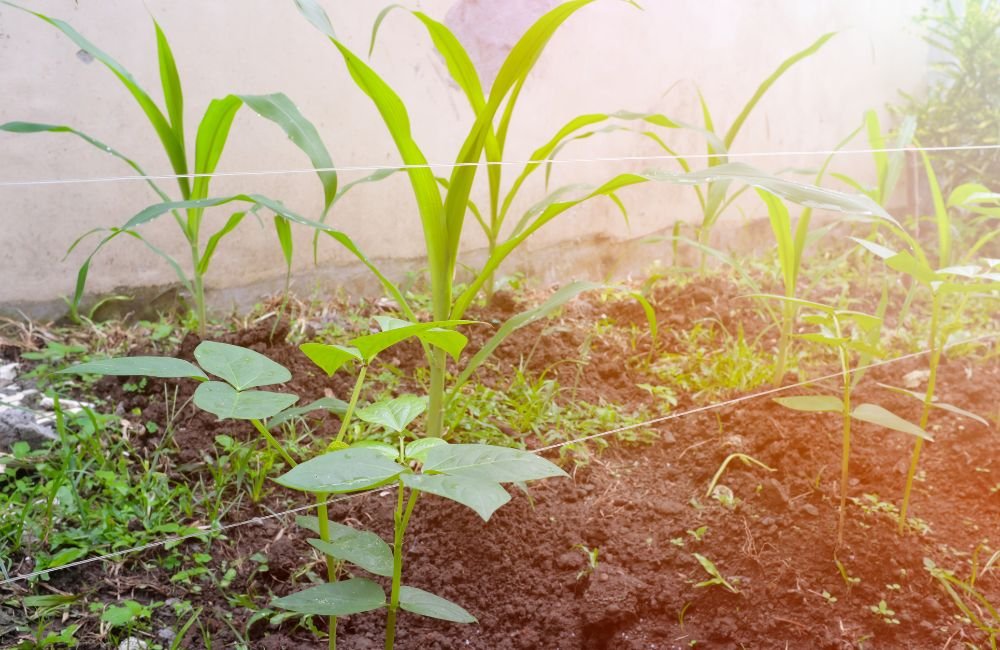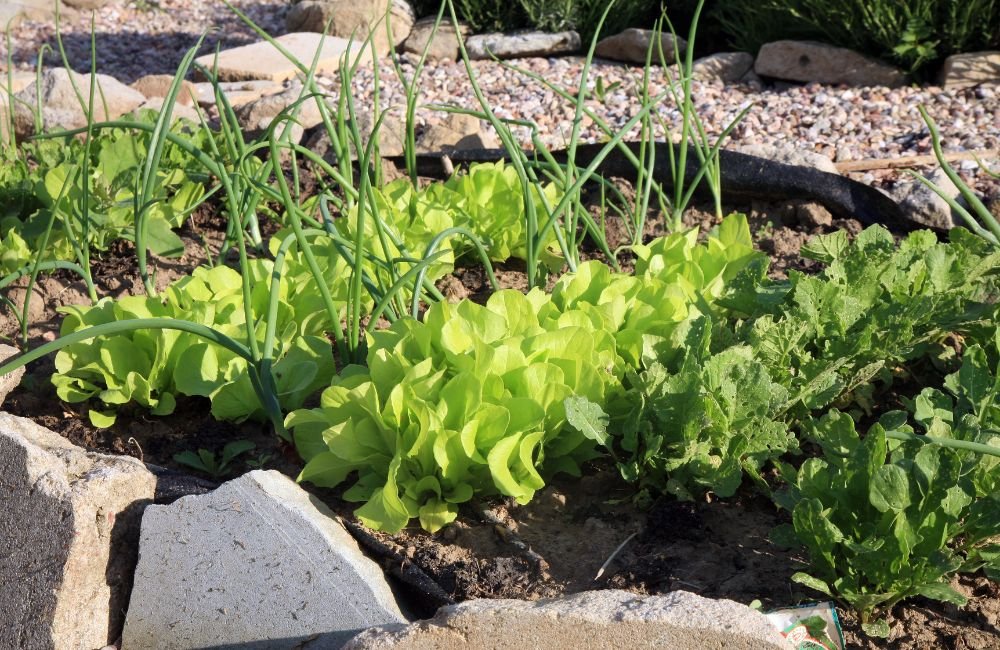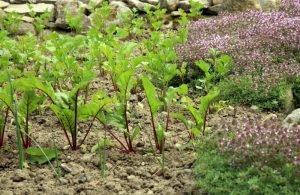Last Updated on October 27, 2025 by teamobn
Many backyard beds waste sunlight, soil life, and airflow because crops compete the wrong way. Home intercropping fixes that by pairing plants that share space and resources without tripping each other up. Tall, deep-rooted anchors shelter quick, shallow crops so both finish strong. Diverse roots, scents, and canopies confuse pests and keep soil biology humming. You get fuller harvests, cleaner beds, and fewer inputs.
Before you dive into specific high-yield pairings, it’s worth exploring the core principles of intercropping. Understanding how light, roots, and soil biology interact at a fundamental level will help you fine-tune these combinations for your own space.
The Science Behind Home Intercropping
Contents
Companion yields come from biology, not magic. Smart mixes share light, roots, and microbes to unlock more growth. Here’s how intercropped plants cooperate above and below ground to raise harvests.
Canopy sharing and light use
Different plant heights split sunlight instead of fighting over it. Tall anchors capture high-angle rays while understories sip the scattered light below. Leaf shapes matter because narrow blades cast a lighter shade. Reflective soils and light paths between rows push photons deeper. You get steadier photosynthesis during long days and heat spikes. That stability shows up as fuller heads, calmer transpiration, and fewer sunscald losses.

Roots, exudates, and nutrient access
Roots claim different soil lanes, so neighbors mine separate seams of water and minerals. Deep taproots open channels that hold moisture for shallow feeders. Sugary exudates feed microbes that trade nitrogen and phosphorus back. Some partners loosen tight soil with fine roots that behave like living tillage. Micro-zones form around each root type and reduce direct competition. The bed acts like a layered pantry instead of one crowded shelf.
Microclimate, airflow, and moisture
Mixed canopies slow hot winds while keeping air moving near leaves. That balance lowers leaf temperature but limits humidity pockets that drive mildew. Ground-hugging fillers shade soil and cut evaporation. Taller stems lift blossoms and fruit into steadier airflow. Mulches and living covers hold dew where microbes can work. Moisture stays available longer, so plants ride out brief dry spells without stress.
Pest confusion and pollination lift
Varied scents, textures, and bloom times scramble pest search patterns. Pests miss targets more often when the bed’s visual cues keep changing. Decoy edges draw early feeders away from main crops. Predator insects stick around because something is always flowering or shedding nectar. Pollinators see a runway of successive blooms rather than gaps. Better pollination plus fewer pest hits translate into cleaner, heavier harvests.
Core Intercrop Archetypes for Small Spaces
Small spaces thrive on smart pairings that stack light, roots, and time. These archetypes give you blueprints for beds, boxes, and bags. Mix and repeat to fit seasons and goals.
Tall anchor with salad understory
Use a sturdy, taller crop as the light catcher, then tuck quick salads beneath. Corn, okra, or sunflowers lift leaves and pull heat upward. Lettuce, arugula, or mizuna ride in the cool band below. Shade reduces bolting and sunscald. Roots split the soil profile, so water use evens out. Harvest greens early while anchors mature, then reseed to keep the floor producing.
Vines on a living trellis with quick fillers
Let climbing beans or cucumbers ride a living scaffold like corn or a stout tomato cage when home intercropping. The vertical layer opens airflow and keeps fruit clean. Fill ground gaps with radishes or baby spinach for fast wins. The trellis moderates heat and wind at mid height. Root zones stagger in depth, so competition drops. Stagger sowing to keep vines climbing as fillers cycle out.
Aromatic borders that shield staple crops
Ring main beds with compact herbs and flowers that confuse pests and attract helpers. Basil, dill, marigold, and alyssum bring hoverflies and lacewings. The border also slows wind at soil level and hides crop silhouettes. Plant densely to cover soil and cut evaporation. Keep edges pruned so paths stay clear. Replace spent blooms quickly to maintain nectar through the season.
Deep taproot plus shallow feeder
Pair a penetrator like carrot, daikon, or parsnip with a shallow feeder such as scallion or leaf lettuce. Taproots drill channels that hold moisture and air. Shallows skim surface nutrients and finish first. This split reduces stall-outs after heat spikes. Water reaches both layers with lighter, more frequent sets. Pull the quick crop to free room as roots bulk up below.
Shade-casting fruiter with cool-season greens
Tomatoes or peppers cast dappled shade that extends spring greens. Slip spinach, cilantro, or lettuce on the north or east side of stakes. Greens stay sweeter and last longer. The fruit crop still gets full sun across the top. Mulch to steady moisture for both tiers. When heat finally ends the greens, replant with basil or purslane to keep the understory active.

Grow-bag trio for balconies and patios
Run three matched bags to stack functions in tiny footprints. Bag one holds a dwarf tomato with trailing thyme. Bag two climbs with pole beans on a compact tripod. Bag three mixes a heat-tolerant lettuce with scallions. Rotate the bags weekly to balance light. Water with a shared tray so runoff feeds across. Swap fillers monthly to keep harvests continuous.
Layouts That Fit Beds, Boxes, and Grow Bag
Small spaces thrive with home intercropping maps. These layouts fit typical beds, planters, and grow bags so home intercropping stays tidy, breathable, and productive across seasons when heat or storms stress plants.
- 2×4 ft bed map: back row tomatoes on stakes, front row leaf lettuce. Slip scallions between tomato stakes. Mulch pathways. Harvest lettuce first, then reseed with basil to keep the understory working.
- 4×8 ft bed, thirds: two trellis lanes for cucumbers and beans, center lane for carrots with a dill edge. Add alyssum corners for hoverflies. Rotate vines left to right next season.
- Narrow side yard, trellis corridor: A-frame or string trellis down the center. Peas in spring, pole beans in summer. Underplant with radish, then switch to chard. Keep a 45–60 cm walkway clear.
- 2×6 ft planter box, shade band: peppers or okra on the sunny side, spinach or cilantro on the cool side. Interplant with marigold nubs every 40 cm. Replace greens with purslane when heat arrives.
- Balcony rail boxes, 60–90 cm: thyme at the front lip, dwarf cherry tomato at midline, basil or chives at the back. Pinch tomatoes weekly to hold airflow. Deep water every third day in heat.
- 5-gallon grow-bag trio: bag 1 dwarf tomato plus trailing thyme. Bag 2 pole beans with a compact tripod. Bag 3 heat-tolerant lettuce and scallions. Rotate bags weekly to balance light.
- 10–15-gallon grow bag, root split: daikon or carrot in the center ring. Lettuce and pak choi around the rim. Water in two passes so deep and shallow roots both drink.
- Checkerboard squares, 30 cm spacing: alternate basil with tomatoes for scent breaks. Drop a lettuce start into any empty square. Refill gaps within three days to keep soil shaded.
- Living border frame: one row of dill, basil, and alyssum around staple crops. Borders hide silhouettes and feed pollinators. Prune edges hard after bloom flushes to keep paths open.
- Olla or wicking line per bed: place clay ollas every 60–75 cm, or run a single wicking strip under the understory. Deep-water anchors weekly. Top up the understory midweek.
- Succession timing card: sow fast fillers at transplant day plus 0, plus 21, and plus 42. Pull the oldest row when anchors flower. Slide in a quick crop to avoid bare soil.
- Storm-ready tie-down pattern: two stakes per trellis corner with cross-ties at mid height. Plant lowest crops on the windward edge. After storms, trim damaged leaves to restore airflow fast.

Seasonal Sequences That Keep Beds Busy
Keep home intercropping beds active by chaining crops that hand off light, roots, and nutrients across the year. Short gaps invite weeds and pests. Tight timing, quick fillers, and smart residues keep harvests steady without extra inputs.
Cool to warm without bare soil
Start with fast cool home intercropping crops that clear early. Radish, baby lettuce, and peas give way to tomatoes or peppers on pre-set stakes. Slip basil and scallions below as the canopy grows. When cool crops come out, mulch the open bands and top-dress with compost. That keeps microbes fed and soil shaded. Transpiration stays smooth as heat rises, so warm crops root fast and avoid transplant shock.
Heat tolerant pairs for midsummer stress
Use home intercropping crops that shrug off hot days and warm nights. Okra, eggplant, and yardlong beans rise above, while sweet potato, basil, and purslane cover soil below. Shade cloth or a taller neighbor softens sun at noon. Deep water less often to train roots downward. Replant quick fillers like bush beans in any gap. Harvest little and often to keep plants pushing fresh growth through the hottest stretch.
Monsoon or storm rhythm plantings
Expect drench cycles and plan for home intercropping drainage. Plant anchors with sturdy stakes and tie low to prevent whip damage. Choose understories that like moisture but dislike pooling, such as chard and kangkong. After each storm, prune damaged leaves to restore airflow. Top up paths with chips to stop mud splash. Sow a quick round of greens once soils settle to convert rain into fast harvests.
Late summer to fall resets
As days shorten, pivot to crops that finish in cooler light. Pull tired vines and follow with spinach, cilantro, and romaine on the north or east side of remaining stakes. Their shade keeps leaves tender. Add a light compost blanket and rewet slowly to wake microbes. Interplant with dill and alyssum for fall pollinators. Harvest outer leaves first to extend the run.
Winter cover that feeds spring
If frost or heavy rain shuts beds down, plant living covers when doing home intercropping that prime next season. Mix oats with vetch or clover in edible beds. Roots hold soil and stock nitrogen for spring transplants. In mild zones, cut covers when they first flower and lay them as mulch. In colder spots, crimp or chop and drop, then cap with compost. Spring crops slide into a fed, protected surface.
Conclusion
Home intercropping turns small spaces into steady, resilient producers with less waste. Smart pairings share light, roots, and time so beds stay active across seasons. You’ll see cleaner harvests, calmer pest pressure, and fewer inputs. Start with one layout, track results, then rotate partners to keep gains compounding. Keep notes on spacing, timing, and yield so your plan gets sharper every cycle.






